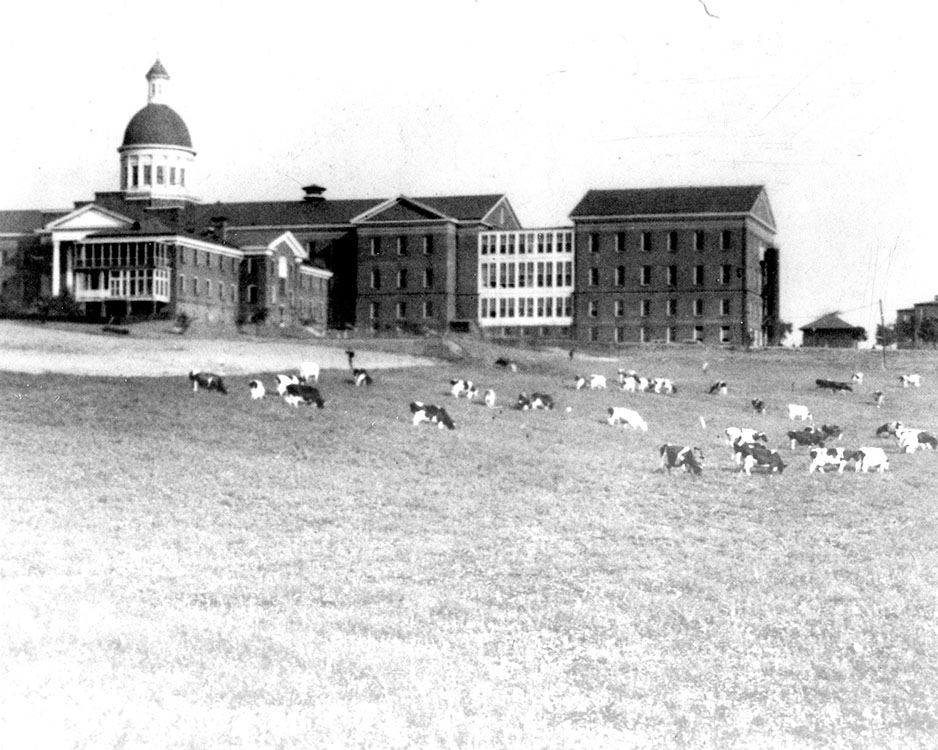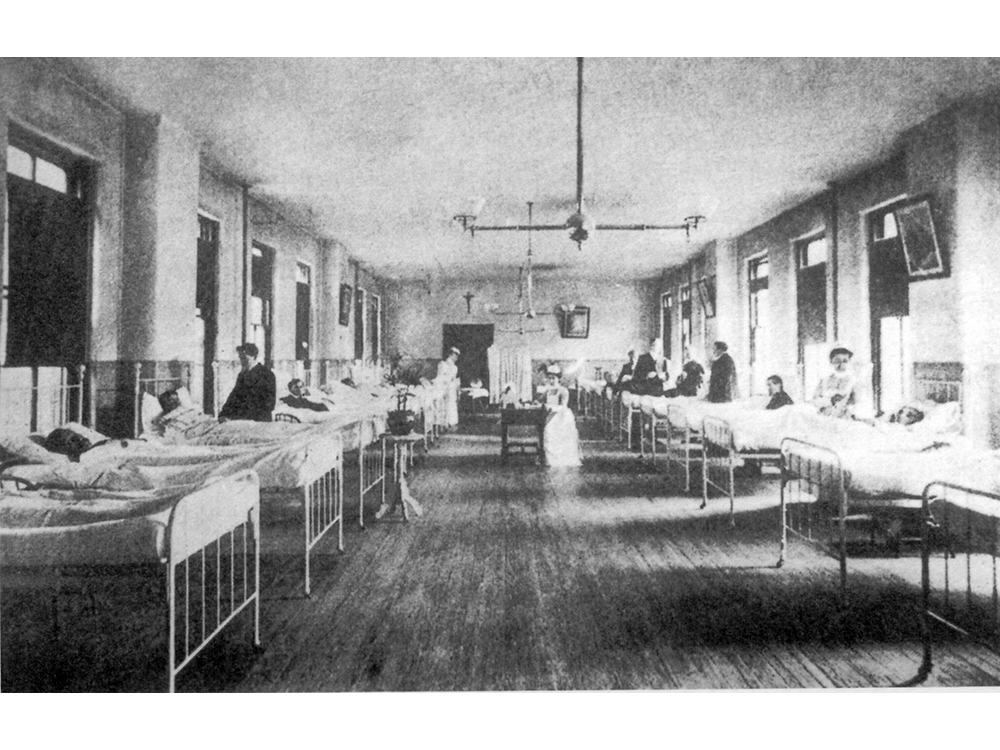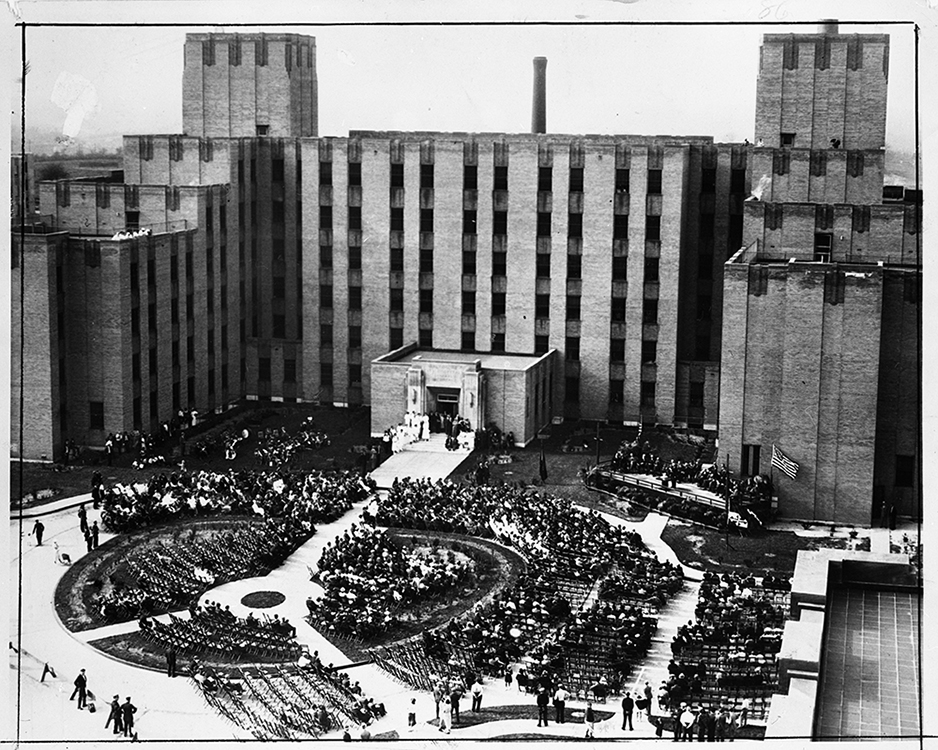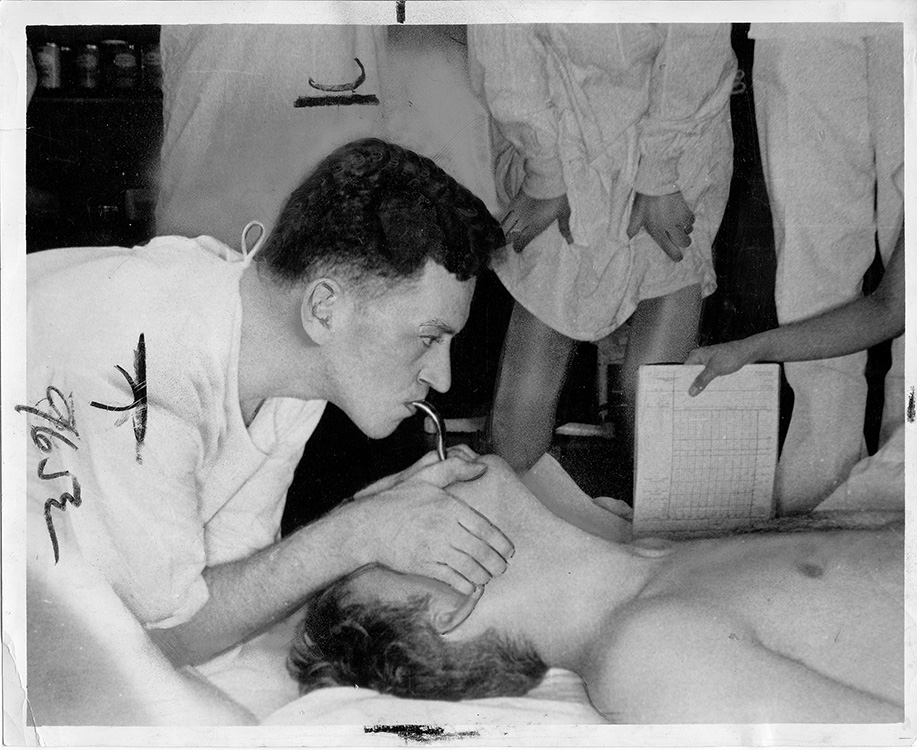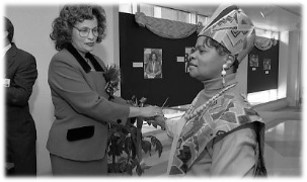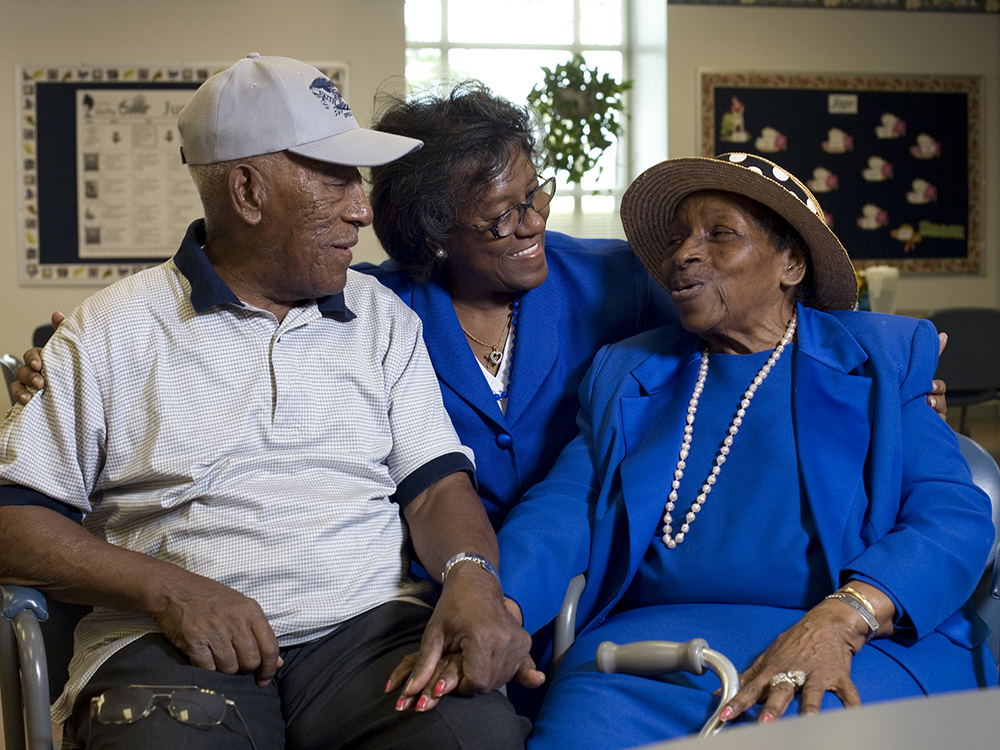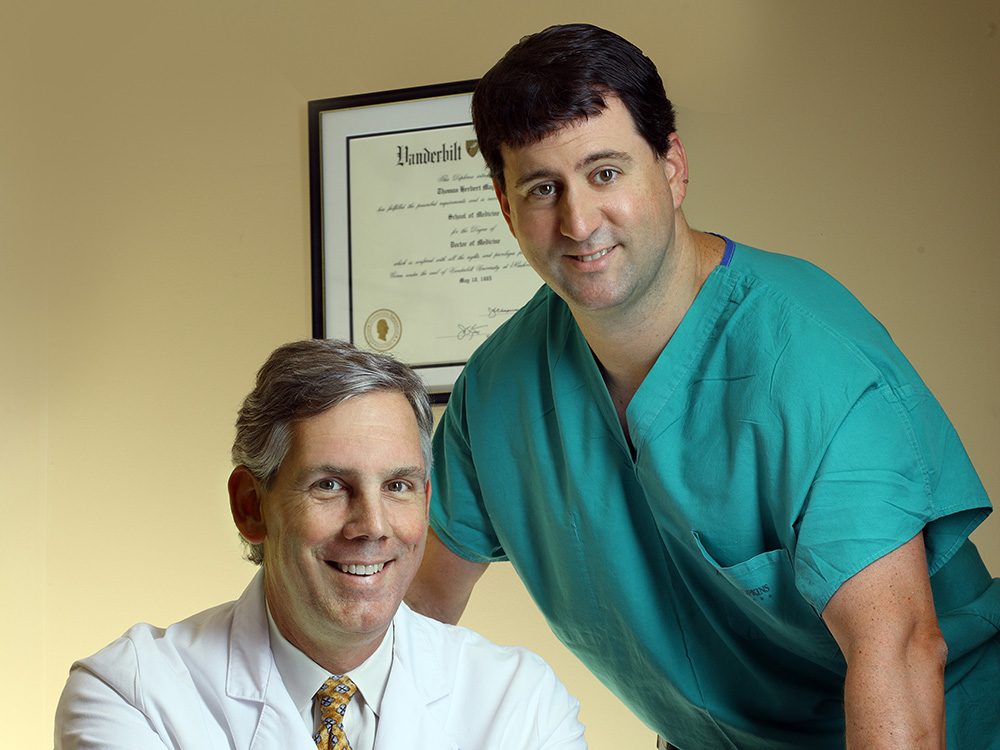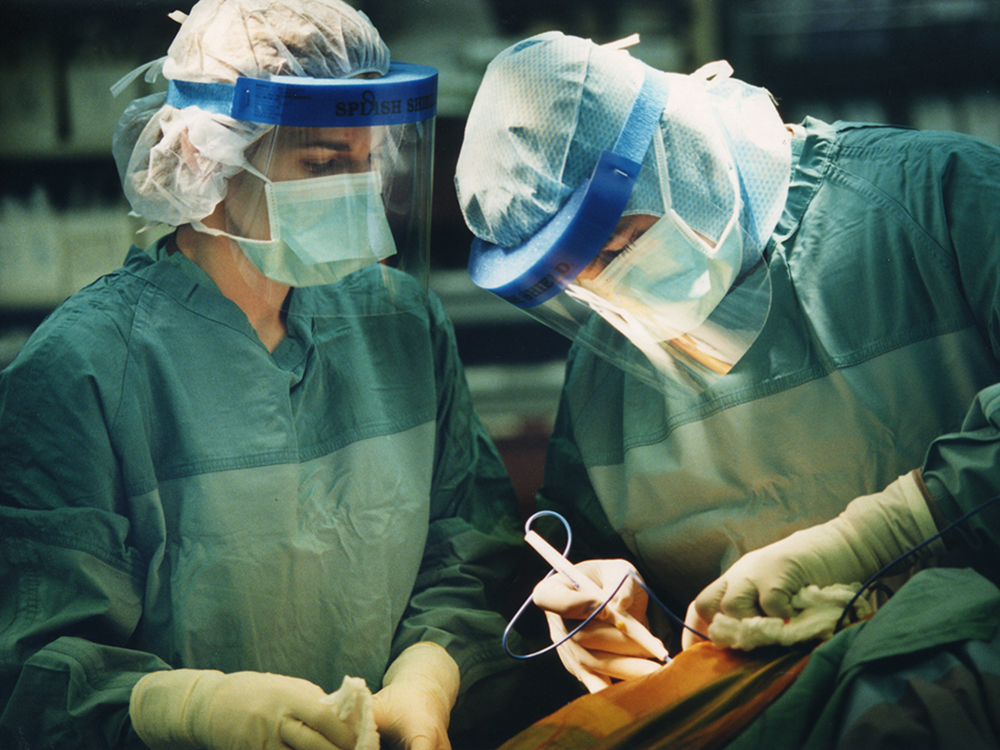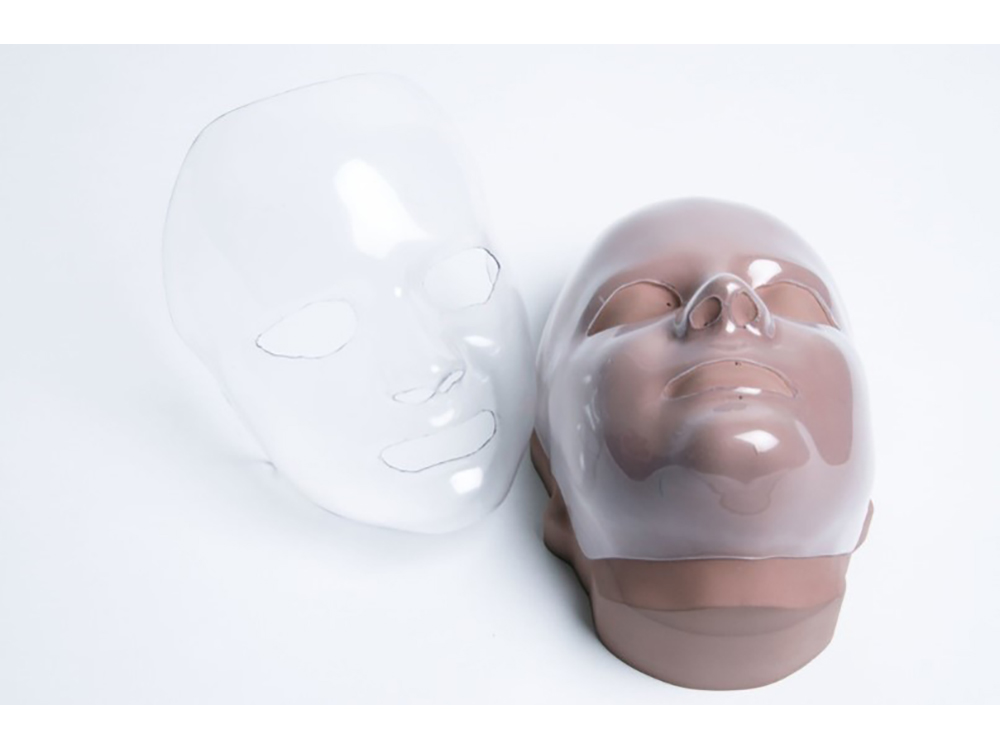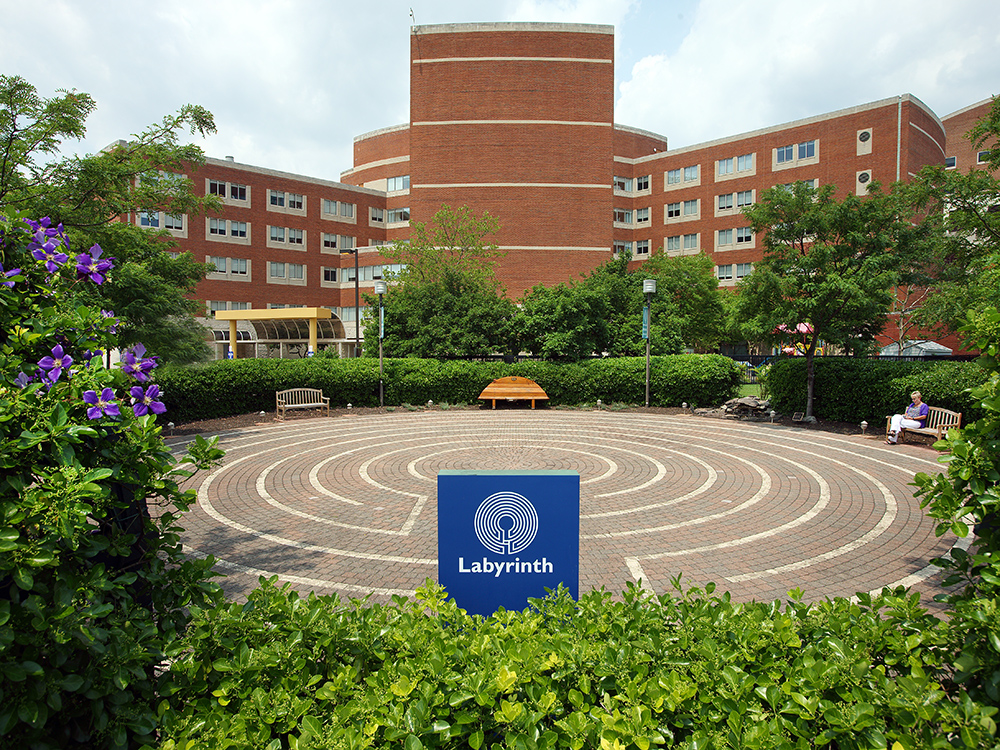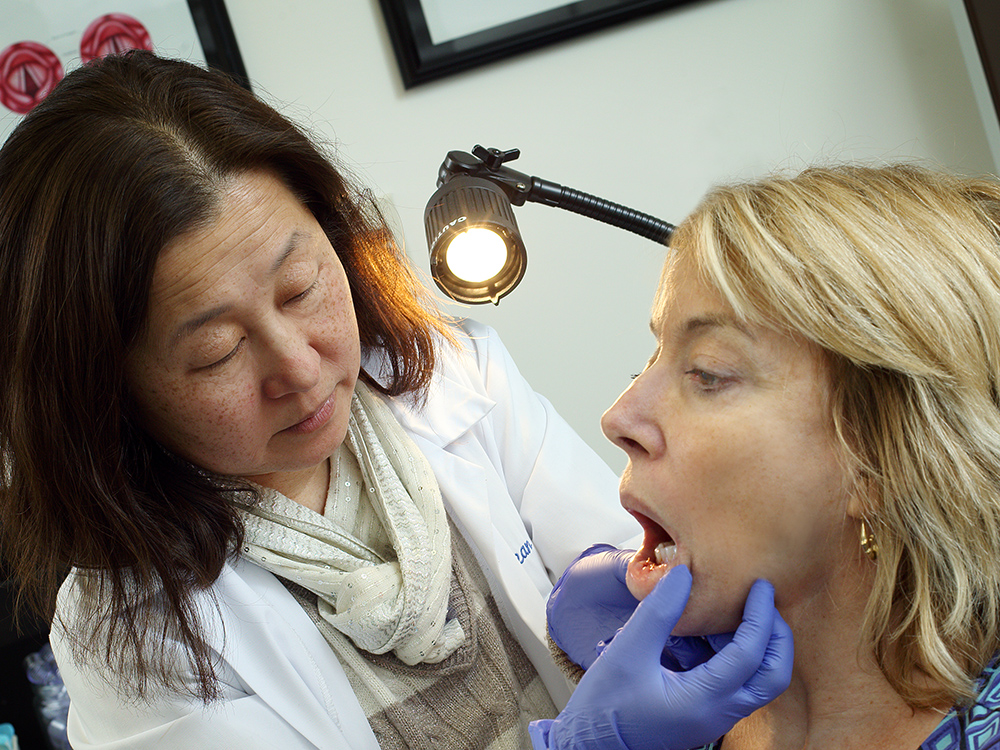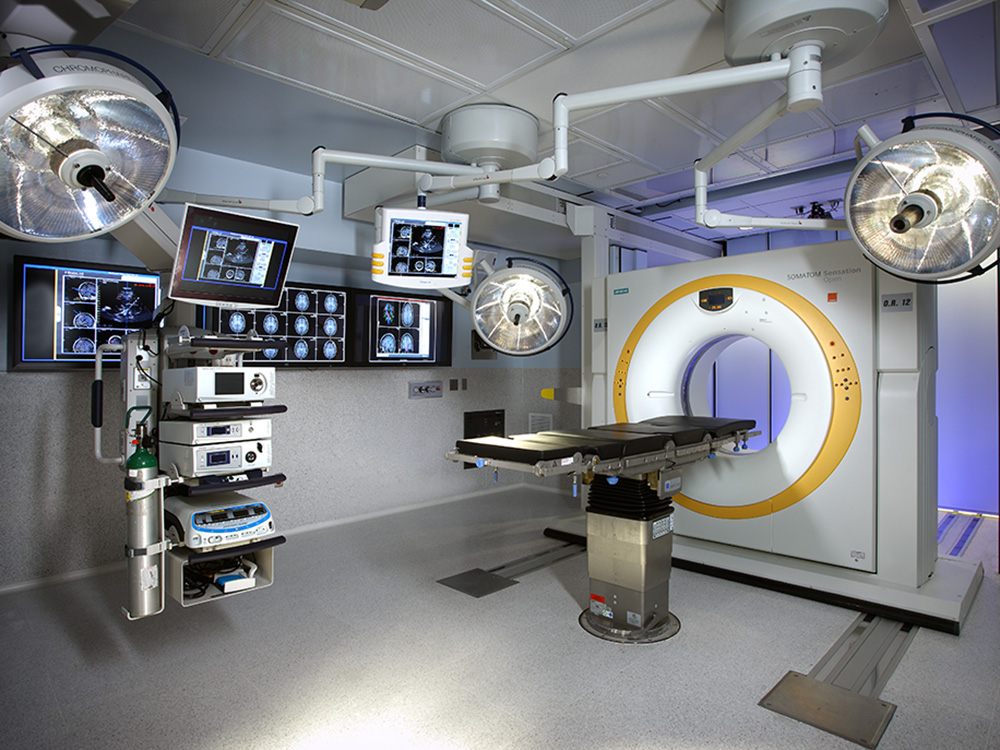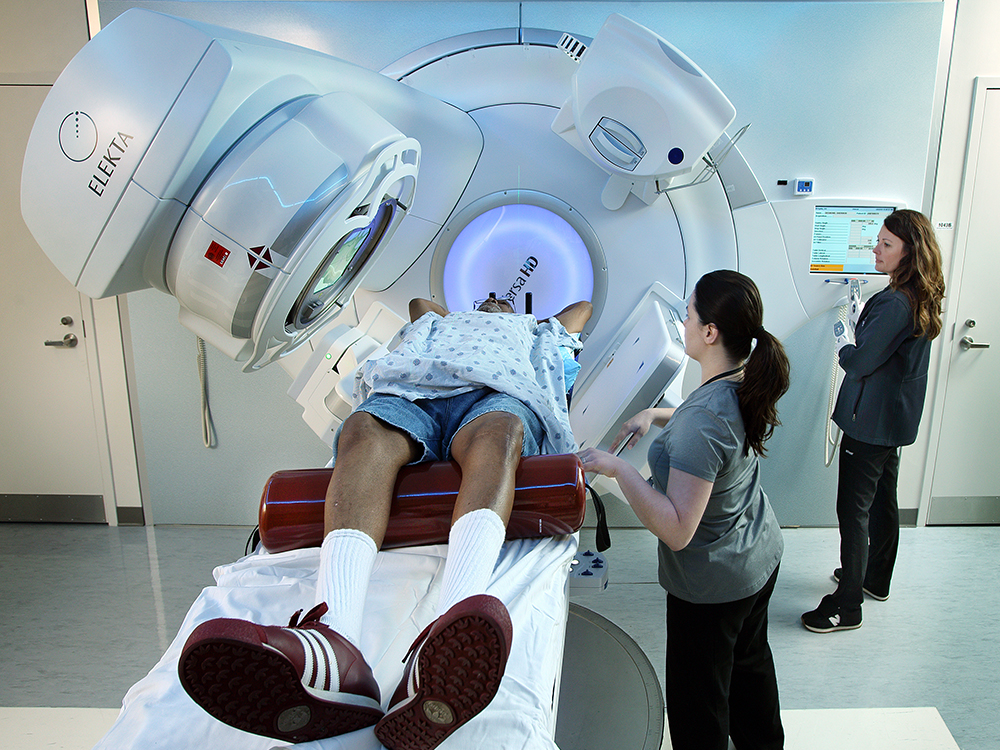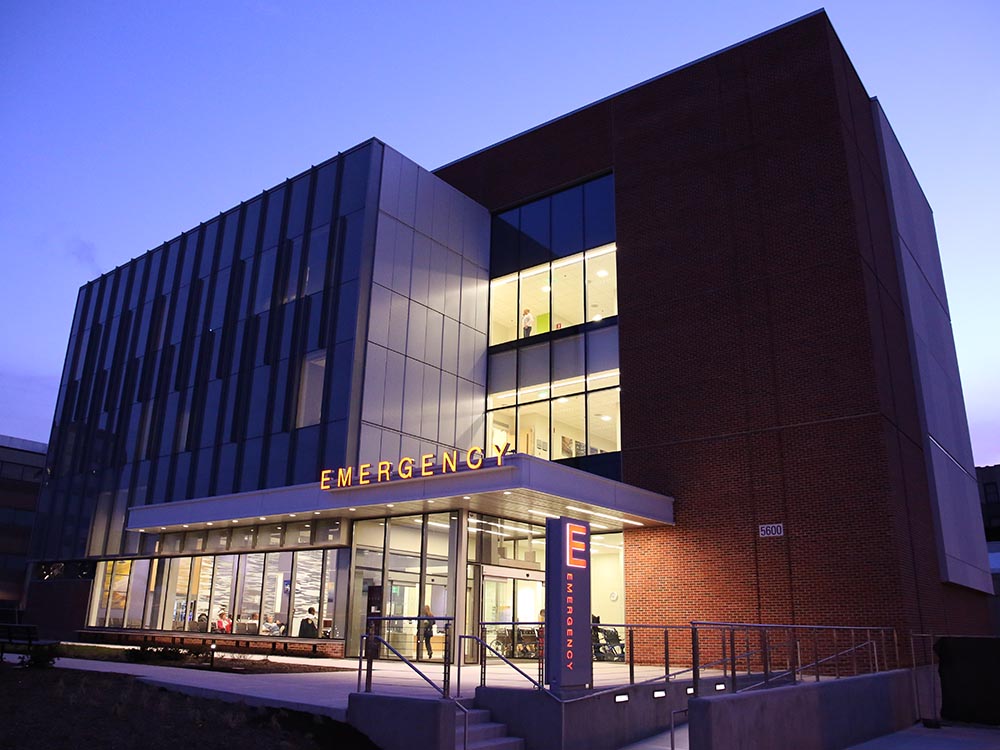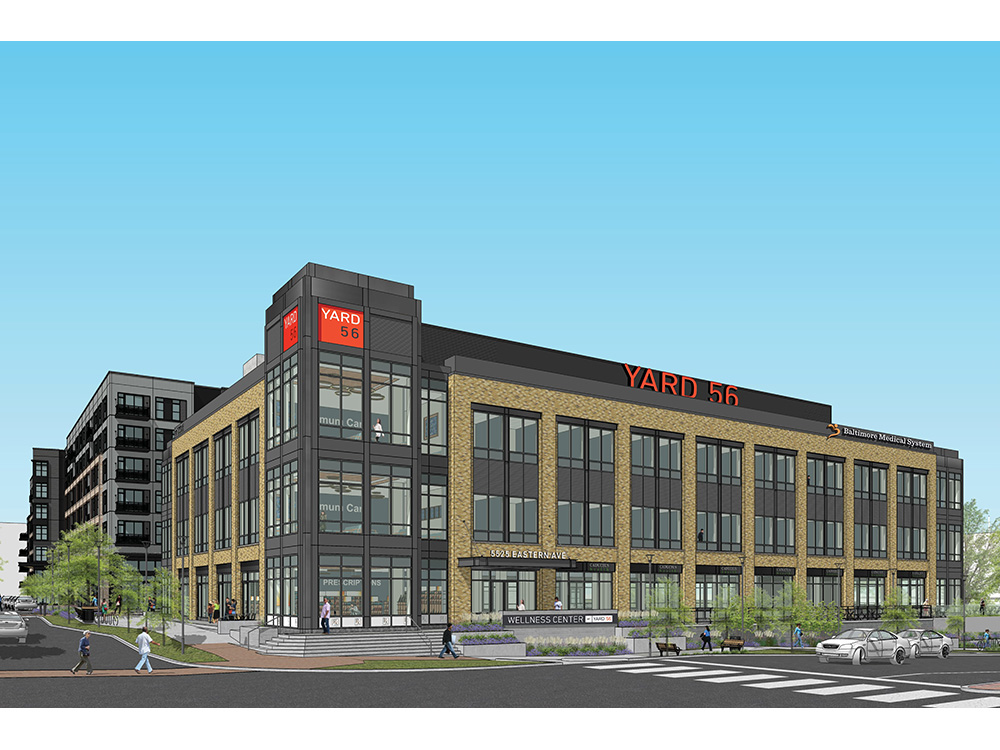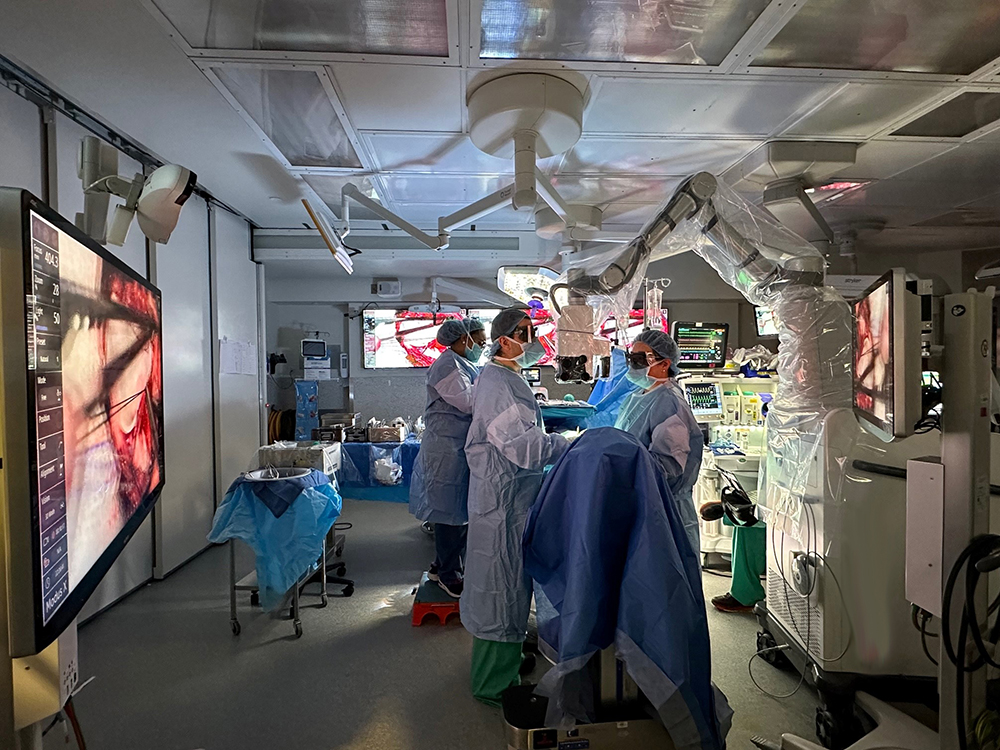 For two and a half centuries, Johns Hopkins Bayview has provided compassionate health care focused on the uniqueness and dignity of each person we serve. With a rich and long tradition of patient care, education and research, we are dedicated to providing and advancing medicine that is respectful and nurturing of the lives of those we touch.
For two and a half centuries, Johns Hopkins Bayview has provided compassionate health care focused on the uniqueness and dignity of each person we serve. With a rich and long tradition of patient care, education and research, we are dedicated to providing and advancing medicine that is respectful and nurturing of the lives of those we touch.
Milestone Moments
Take a look at some of the milestone moments in our 250-year history. As we look to the future, we are excited to add many more milestone moments that will advance and modernize the care we provide to those in our communities.
-
1774 (Image) : Baltimore City and County Almshouse
In 1774, the first institutional ancestor of the Baltimore City Hospitals, and ultimately Johns Hopkins Bayview Medical Center, opened. The building had two sections: a Workhouse, where beggars, vagrants and petty criminals worked, and an Almshouse, where a visiting physician cared for ill residents in an infirmary.
-
1801 (Image) : Maryland’s First Small Pox Vaccination
In 1801, James Smith – known as the father of vaccination in Maryland – performed the state’s first small pox vaccination at the Almshouse. Small pox, a serious, contagious and sometimes fatal disease, was eradicated thanks to what became routine vaccinations.
-
1866 (Image) : Almshouse Relocates
The Almshouse relocates to southeast Baltimore (current location of Johns Hopkins Bayview) in 1866 and is renamed “Baltimore Bay View Asylum.” The new name reflected our new role: an asylum for the mentally ill, as well as a place for the poor, lawbreakers and people needing medical care.
-
1890 (Image) : Tuberculosis Wards
In 1890, Bay View established separate wards to treat patients with pulmonary tuberculosis (TB), an infection found in the lungs. These were likely the first separate TB wards ever in a U.S. general hospital.
-
1925 (Image) : Baltimore City Hospitals
Bay View Asylum was renamed Baltimore City Hospitals in 1925 to reflect the site’s hospitals for acute care, chronic care and tuberculosis. Many mentally ill patients were sent to new state mental hospitals for treatment. In 1935, a new, 450-bed general hospital (present-day A Building) and the north section of the B Building opened, despite the 1929 stock market crash and resulting Great Depression.
-
1958 (Image) : First Multidisciplinary ICU and the Pioneering of CPR
In 1958, City Hospitals opened a medical-surgical multidisciplinary intensive care unit – the first ICU in the country with 24-hour coverage by anesthesiologists. A few years later, Peter Safar, M.D., pioneered mouth-to-mouth resuscitation and cardiopulmonary resuscitation (CPR) on our campus, earning him the nickname “Father of CPR.”
-
1984 (Image) : Transfer of Ownership
In 1984, Baltimore City Hospitals officially became part of the Johns Hopkins family when ownership was transferred to The Johns Hopkins Hospital and University. The facility was renamed the Francis Scott Key Medical Center.
-
1984 (Image) : Black History Month Committee
Founded in 1984, the goal of the Black History Month Committee is to not only raise awareness of black history, but to also instill a sense of pride among the African Americans who work at the hospital. Since its establishment, the committee has hosted a number of larger events through the years, including fashions shows, employee talent shows, cultural arts days and keynote presentations.
-
1996 (Image) : Hopkins ElderPlus
In 1996, Johns Hopkins Bayview became the first of 15 health care facilities in the nation and the only one in Maryland to participate in PACE (Program of All-Inclusive Care of the Elderly). The program, now called Hopkins ElderPlus, provides and coordinates all preventive, primary, acute and long-term care services so that older adults can continue living in their community.
-
1997 (Image) : Johns Hopkins Center for Bariatric Surgery
In 1997, Dr. Thomas Magnuson founded the bariatric surgery program, which was later named the Johns Hopkins Center for Bariatric Surgery. To date, more than 10,000 procedures have been performed at Johns Hopkins Bayview. Among the Center’s accolades are the first laparoscopic Roux-en-Y gastric bypass in the Mid-Atlantic region and the first laparoscopic lap band procedure in Maryland.
-
1998 (Image) : "Mini Hip" Replacement
In 1998, Dr. James Wenz became one of the first surgeons in the country to use a “mini hip” procedure, totally replacing a patient’s hip through a four-inch incision instead of the traditional 10- to 12-inch incision. The Wenz Orthopaedic Unit was named in memory of Dr. Wenz and his wife, Lidia, who tragically died in a car accident in 2004.
-
1999 (Image) : Total Contact Burn Mask
The Johns Hopkins Burn Center became the first in the country to offer total contact burn masks in 1999. Produced by a laser scanner, the therapeutic facial masks help reduce facial scarring during burn treatment and recovery.
-
2000 (Image) : Labyrinth
The labyrinth on Johns Hopkins Bayview’s campus was the first of its kind on the East Coast in a health care setting. Since its installation in 2000, the labyrinth has become a popular spot for relaxation, reflection and recreation for patients, visitors and staff.
-
2008 (Image) : Memory and Alzheimer’s Treatment Center
Under the leadership of Drs. Constantine Lyketsos and Peter Rabins, the Johns Hopkins Memory & Alzheimer’s Treatment Center opened in 2008. The Center offers comprehensive evaluation and innovative treatment to patients with a range of conditions that affect cognition and memory, including Alzheimer's disease and other dementias, traumatic brain injury, and brain vascular disease.
-
2009 (Image) : Jerome L. Greene Sjögren’s Syndrome Center
In 2009, the Jerome L. Green Sjögren’s Syndrome Center became the first clinic in the world dedicated to patients who have been diagnosed with the autoimmune disorder. The multidisciplinary center draws on expertise from multiple specialties, including rheumatology, neurology, otolaryngology and ophthalmology.
-
2009 (Image) : Intraoperative CT Scanner
In December 2009, Johns Hopkins Bayview was the first hospital on the East Coast to use an intraoperative CT scanner (iCT) and neuronavigation software to help doctors perform complex brain surgeries. With these tools, surgeons can more precisely identify the exact anatomy and operative approach after positioning the patient on the OR table, as well as assess the success of the procedure before leaving the operating room.
-
2015 (Image) : Sidney Kimmel Cancer Center
The opening of the Sidney Kimmel Cancer Center in February 2015 expanded the size of the medical oncology practice and brought radiation oncology to campus for the first time. Designed to bring a new level of comfort to patients, the building features large windows that overlook a tranquil garden space and ambient lighting that can be adjusted to any color on the spectrum. Additionally, the Cancer Center features 20 clinical exam rooms, 21 infusion bays, a CT simulator and a linear accelerator used for radiation treatment.
-
2015 (Image) : North Pavilion
In March 2015, the doors of the North Pavilion opened to patients. The 54,000-square-foot space includes an adult emergency department, combined pediatric emergency department and inpatient unit, and observation floor. Additional renovations completed in the legacy emergency department allow the new and updated spaces to accommodate more than 50,000 visits per year.
-
2017 (Image) : First DAISY Award Winner
In February 2017, Tina Dougherty, RN, was named the inaugural recipient of the DAISY Award, a national recognition program that honors the compassion and clinical care that our nurses provide every day. Dougherty was nominated by her peers for her clinical excellence, willingness to help others and positive attitude that brings the team together.
-
2017 (Image) : 5500 Lombard Street
Johns Hopkins Bayview reconfirmed its commitment to mental health with the opening of 5500 Lombard Street, a beautiful new space for staff, faculty and patients of the Community Psychiatry Program. The new location offers its patients easier access to care and enhanced coordination among providers.
-
2018 (Image) : Renovated Cafeteria Offers Healthier Food Choices
After many months of renovations and upgrades, the Courtyard Café reopened in the spring of 2018. Guests can choose from seven different stations, all of which offer a number of healthy food options, including baked chicken tenders, made-to-order salads and chef’s table meals. The cafeteria redesign served as a model for transformations at other hospitals within the health system.
-
2020 (Image) : COVID-19
Johns Hopkins Bayview’s first COVID-positive patient was diagnosed on the Carol Ball Medicine Unit on March 18, 2020. Throughout the pandemic, our staff was challenged in ways we could never imagine. The one thing that remained consistent was our strength and resiliency through it all.
-
2023 (Image) : Yard 56
In the spring of 2023, Johns Hopkins Bayview partnered with Baltimore Medical System (BMS) to provide a comprehensive range of routine gynecological and obstetrical services to patients of all ages, as well as specialty care in adolescent gynecology, high-risk obstetrics and maternity care. Services are offered at BMS’ newest location at Yard 56, a privately owned mixed-use development located across the street from the Medical Center.
-
2023 (Image) : First Woman President
In May 2023, Jennifer Nickoles was named the first woman president in the hospital’s 250-year history. Nickoles first came to Johns Hopkins Medicine in 1996 and has served in a number of leadership roles throughout the health system. “Johns Hopkins Bayview is a very special place to me, and it is a tremendous honor to be named president,” she said in a news release. “My focus is on working collaboratively to provide exceptional health care for our patients, maintain the preeminence of our academic mission and provide an enriching environment for our employees.”
-
2023 (Image) : 3D Robotic Arm Technology
In August 2023, Johns Hopkins Bayview was the first hospital in Maryland to successfully complete a neurosurgical procedure using 3D robotic arm technology. This equipment is outfitted with an exoscope and features 4K 3D optics and fluorescent visualization for neurosurgery, spine, otolaryngology and reconstructive microsurgery. The use of robotic assistance in surgery has the potential to reduce recovery times, minimize complications and enhance the overall patient experience.




